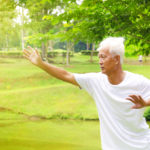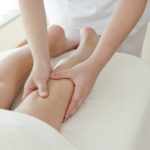Is There Any Benefit To “Tapping” Therapy?
I’ve been seeing a lot of social media posts and videos about tapping – what is that about, and what does it do?
Andrew Weil, M.D. | October 14, 2021

Tapping, which is a variant of qi gong, is an ancient practice with many iterations. Some forms are designed to invigorate you, others to calm you, but all are based on influencing the body’s meridians. In Traditional Chinese Medicine, meridians are the pathways of energy, or qi, throughout the body. When physical or emotional stresses block the flow of qi, practices such as acupuncture, acupressure, and qi gong tapping help release it. These methods have been used for centuries, quite effectively, to relieve pain, reduce stress, and treat illnesses.
Qi gong itself is a mind-body practice that integrates movement, posture, breathing, and focused intention to enhance the flow of chi in the body. The practice has been shown in studies to reduce blood pressure; relieve pain in those with fibromyalgia and cancer, and even provide benefits to people with conditions as varied as Parkinson’s disease, COPD, and depression.
Many forms of tapping are very vigorous, designed to energize you and awaken the senses. Others are more subtle, intended to relax you and relieve stress. You can perform tapping on yourself, or have a practitioner treat you. The theory is the same: By stimulating key points along the meridians, you release the flow of chi and rebalance your mind, body, and spirit.
Those points include the very top of the head, several around the face, and others in the torso and down the arms and legs. They overlap with many lymph nodes, including those under the arms and around the breastbone. There are many variations in rhythm, patterns, and sequence, and there are many online videos that demonstrate the different styles.
A specific form of tapping, called Emotional Freedom Technique, or EFT, adds an element of cognitive behavioral therapy to qi gong tapping. A 2016 report published in the Journal of Holistic Nursing reviewed more than 60 studies and found EFT to be 98% effective for addressing the symptoms of PTSD and other psychological conditions, and for physical illnesses that included asthma and epilepsy; it also improved academic and athletic performance. My colleague Ann Marie Chiasson, M.D., a family practitioner who specializes in integrative medicine and energy medicine, notes that EFT doesn’t use the full body, only certain points, and may be less effective than full-body qi gong tapping.
Many of the research studies into the benefits of qi gong conclude that the practice is effective, but those studies have not looked at tapping specifically, or in isolation, only in the larger context of qi gong. Read my guide to qi gong for an overview of the system.
Andrew Weil, M.D.
Sources:
Rancour P. “The Emotional Freedom Technique: Finally, a Unifying Theory for the Practice of Holistic Nursing, or Too Good to Be True?” J Holist Nurs. 2017 Dec;35(4):382-388. doi: 10.1177/0898010116648456. Epub 2016 May 11. PMID: 27170647. The Emotional Freedom Technique: Finally, a Unifying Theory for the Practice of Holistic Nursing, or Too Good to Be True? – PubMed (nih.gov)
Toneti BF, Barbosa RFM, Mano LY, Sawada LO, Oliveira IG, Sawada NO. “Benefits of Qigong as an integrative and complementary practice for health: a systematic review.” Rev Lat Am Enfermagem. 2020;28:e3317. doi: 10.1590/1518-8345.3718.3317. Epub 2020 Jul 15. PMID: 32696918; PMCID: PMC7365612. Benefits of Qigong as an integrative and complementary practice for health: a systematic review – PubMed (nih.gov)
Church D, Hawk C, Brooks AJ, Toukolehto O, Wren M, Dinter I, Stein P. “Psychological trauma symptom improvement in veterans using emotional freedom techniques: a randomized controlled trial.” J Nerv Ment Dis. 2013 Feb;201(2):153-60. doi: 10.1097/NMD.0b013e31827f6351. PMID: 23364126. https://pubmed.ncbi.nlm.nih.gov/23364126/











